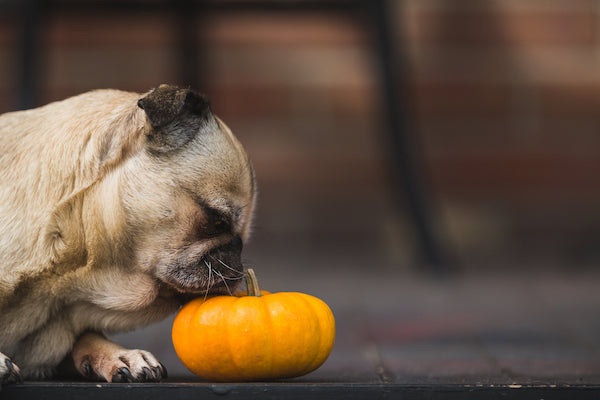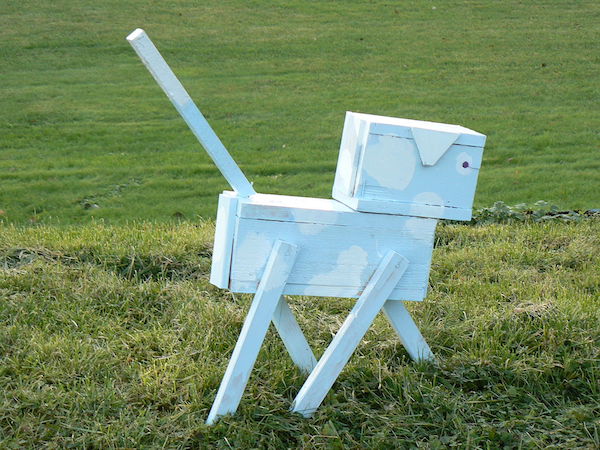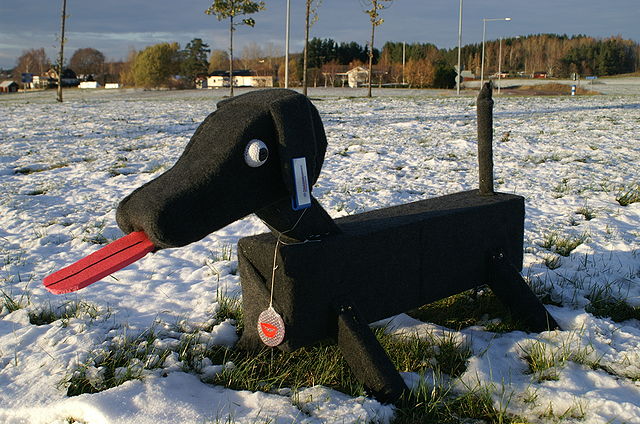
It started in Linköping, Sweden towards the end of 2006. A sculptured dog made of concrete created by Stina Opitz had been installed as part of an official roundabout installation, but after it was vandalised, it was removed. Opitz had been planning to make a new version of the dog to replace the original, but before that could happen, someone put a homemade wooden dog in its place.
And then someone gave the dog a concrete dogbone.
After the media reported this strange appearance, “roundabout dogs” started popping up all over the place, and always in the middle of a roundabout. Some “dogs” were made of wood, others of fabric or concrete, and many were made with whatever materials were laying around. The Swedes called them de östgötska rondellhundarna.

From Wikipedia, image appears under the Creative Commons Attribution-Share Alike 3.0 Unported license. We suspect it’s a Boxer. Ba-da-boom.
The trend soon spread to the rest of Sweden. It became “a thing” to create and install a rondellhund at some point in one’s life. After Spanish television reported on it, the fad, for lack of a better word, spread to other countries.

The roundabout dog on the Piccotts End roundabout in Hemel Hempstead, Hertfordshire, photo by ClickRick and shared under the Creative Commons Attribution-Share Alike 3.0 Unported license.
Unlike the original replacement, most of the Roundabout Dogs have been left alone, or even restored if harmed. Those who quite liked the dogs were alarmed when traffic authorities considered removing them lest they distract drivers and become a hazard, but eventually, it was determined that the Roundabout Dogs were not only not illegal, but a fun diversion for kids in the car. The dogs became folk art.

Shared from Wikicommons under the Creative Commons Attribution-Share Alike 3.0 Unported license.
Some started making the rondellhund for charity, or to put in gardens. In a few small towns where there weren’t any roundabouts, dog sculptures were installed in ordinary intersections with traffic islands.

A tall Scottie, we suspect. Image from Wikimedia and shared under the Creative Commons Attribution-Share Alike 3.0 Unported license.
And yes, we’ve seen some purebred Roundabout Dogs. We don’t have permission to share this one, but it looks like an Airedale to us, how about you?
The Insurance Institute for Highway Safety (IIHS) conducted a study and found that roundabouts reduce crash injuries by 75% at intersections where stop signs or signals were previously used for traffic control, but most Americans still don’t like them. Or have figured them out:
Swedes have no such problems, and it might be due to lots of practice. As of 2010, when there were 2,780 rondeller/roundabouts in the country. We love the idea of rondellhundar. Artists are anonymous, and most installations are visibly homemade, if not quirky. If one must navigate a roundabout, what better way than to do it with a smile on the face from a idiosyncratic form of art right smack in the middle of the circle?
Image: It’s round, all right, but this is not a roundabout dog. Photo by Matthew Henry comes from the free photo site Burst
